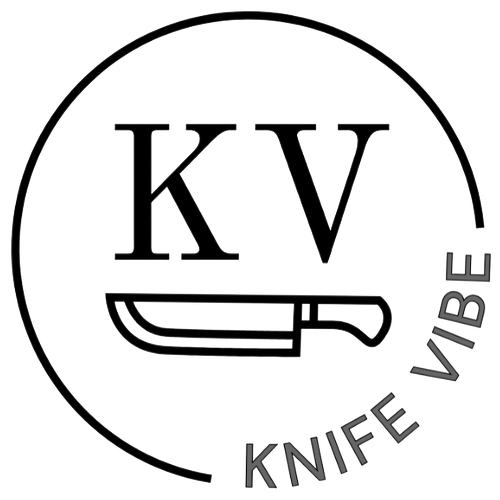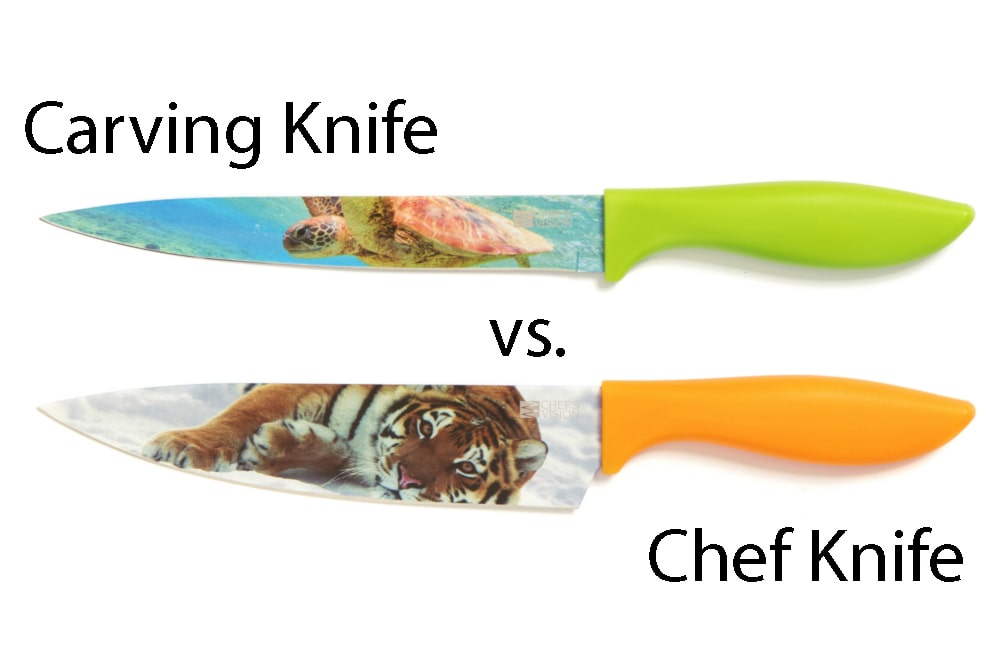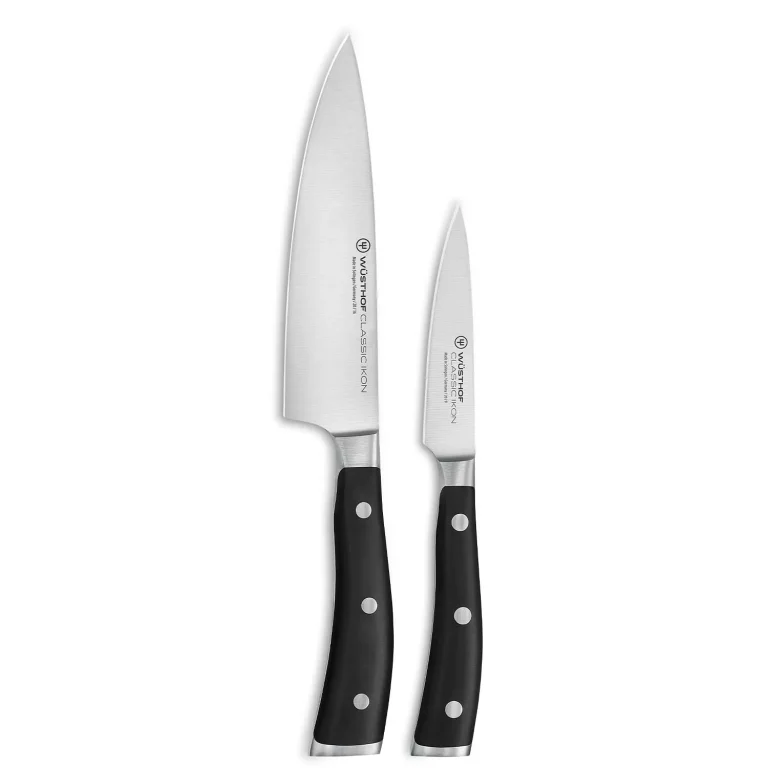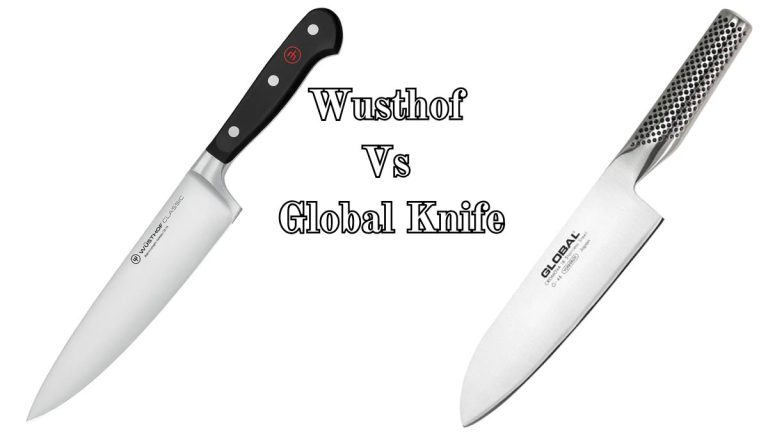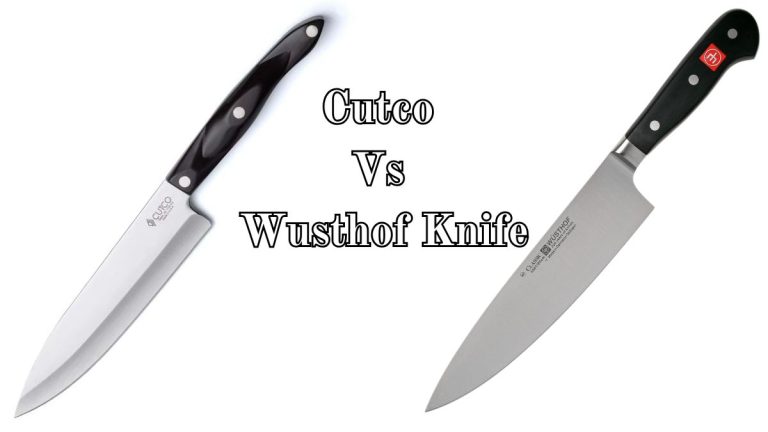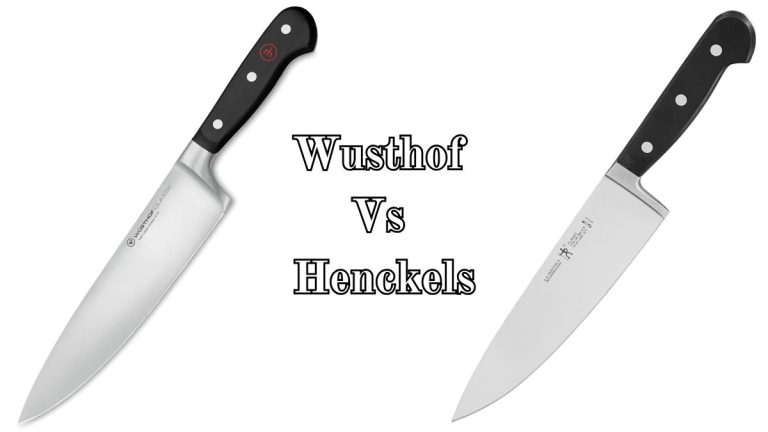Chef Knife Vs Carving Knife: The Ultimate Comparison Guide
Choosing the right knife can make a big difference in the kitchen. Chef knives and carving knives serve different purposes and have unique features.
Understanding the differences between a chef knife and a carving knife can elevate your cooking. A chef knife is versatile, perfect for chopping, slicing, and mincing. Its broad blade helps with a variety of tasks. On the other hand, a carving knife excels in slicing meats with precision.
Its long, narrow blade ensures thin, even slices. Whether you are a home cook or a professional chef, knowing which knife to use can improve your culinary skills. This comparison will help you decide which knife fits your needs best, ensuring efficient and enjoyable cooking experiences. Let’s dive into the specifics of each knife to see how they differ.
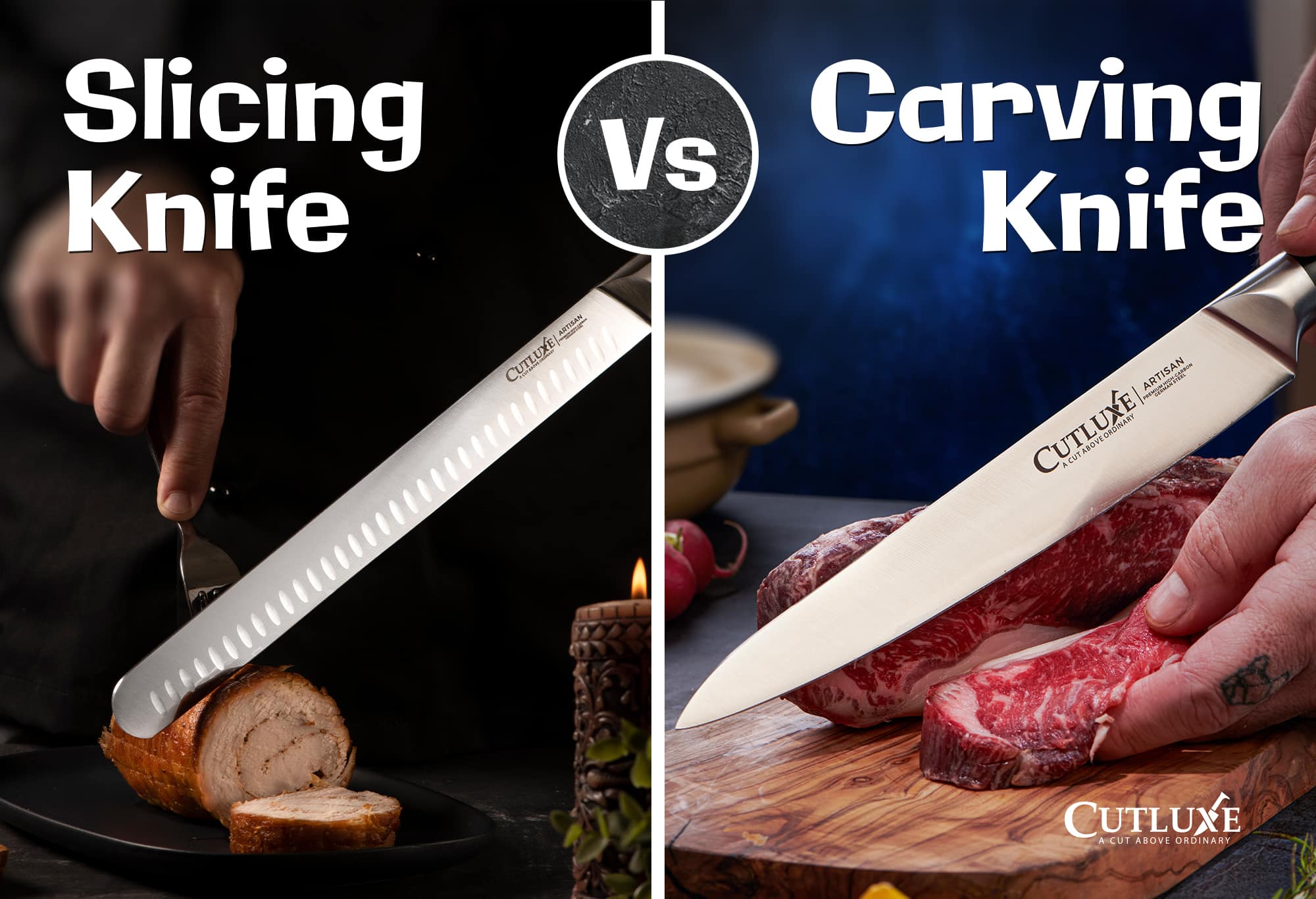
Credit: www.cutluxe.com
Chef Knife Basics
Understanding the basics of a chef knife is crucial for any kitchen enthusiast. This versatile tool serves many purposes, making it a must-have in every kitchen. Let’s dive into the key aspects of a chef knife, focusing on its design, features, and common uses.
Design And Features
A chef knife typically has a broad, curved blade. The blade usually ranges from 6 to 12 inches in length. The curve of the blade allows for a rocking motion during chopping. This design helps in efficient cutting and chopping. The handle is often made of wood, plastic, or composite materials. A good handle provides a comfortable grip. Balance between the blade and handle is essential. It ensures ease of use and reduces fatigue. Some chef knives also feature a full tang. This means the blade extends through the handle. It adds strength and durability.
Common Uses
A chef knife is incredibly versatile in the kitchen. It’s used for chopping vegetables, slicing meat, and dicing fruits. You can also use it for mincing herbs and crushing garlic. The broad blade makes it easy to transfer chopped food. Its curved edge is perfect for chopping herbs finely. The chef knife’s versatility saves time and effort. This knife is essential for both professional chefs and home cooks. It can handle various tasks with ease. Owning a chef knife simplifies many kitchen tasks.
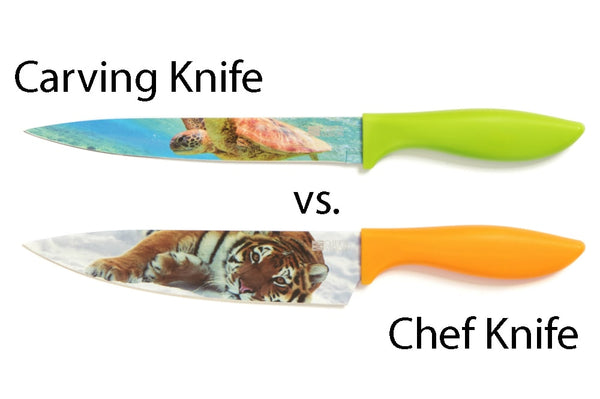
Credit: chefsvisionknives.com
Carving Knife Basics
A carving knife is a specialized tool in the kitchen. It has a long, thin blade designed for precision. This knife is essential for carving meats, poultry, and fish. Understanding its features and uses can improve your kitchen skills.
Design And Features
Carving knives have several distinct features:
- Blade Length: Typically between 8 to 15 inches.
- Blade Shape: Long and narrow for clean cuts.
- Blade Flexibility: Slightly flexible to follow the meat’s contours.
- Handle Design: Ergonomic for a comfortable grip.
These features make carving knives perfect for slicing thin, even pieces of meat.
Common Uses
Carving knives are mainly used for:
- Roasts: Slicing roast beef, pork, and lamb.
- Poultry: Carving turkey, chicken, and duck.
- Fish: Filleting large fish.
- Fruits: Cutting large fruits like melons.
These knives excel in situations that require precision and control.
Material And Build Quality
When comparing a chef knife and a carving knife, understanding their material and build quality is essential. These factors significantly impact their performance and durability. Let’s delve deeper into the key aspects.
Blade Material
The blade material determines the knife’s sharpness and longevity. Chef knives often use high-carbon stainless steel. This material offers a perfect balance of sharpness and rust resistance.
Carving knives, on the other hand, may use stainless steel or carbon steel. Stainless steel is rust-resistant but may need frequent sharpening. Carbon steel provides superior sharpness but requires more maintenance.
| Knife Type | Common Blade Material | Key Features |
|---|---|---|
| Chef Knife | High-Carbon Stainless Steel | Sharp, Durable, Rust-Resistant |
| Carving Knife | Stainless Steel or Carbon Steel | Sharp, May Need Frequent Sharpening |
Handle Construction
The handle construction of a knife influences comfort and control. Chef knives typically feature handles made from wood, plastic, or composite materials. These materials ensure a comfortable grip during extended use.
Carving knives often have handles made of wood or synthetic materials. Wood handles provide a traditional feel and are aesthetically pleasing. Synthetic handles are durable and easy to maintain.
- Wood: Traditional, Aesthetic, Requires Maintenance
- Plastic: Lightweight, Easy to Clean
- Composite: Durable, Comfortable Grip
Choosing the right handle material depends on personal preference. Consider comfort, maintenance, and durability when making your choice.
Performance Comparison
Choosing between a chef knife and a carving knife can be tricky. They both play crucial roles in the kitchen. But how do they perform differently? This section will delve into the performance of these two essential tools.
Cutting Precision
The chef knife is known for its versatility. It has a broad blade, which makes it good for precise cuts. The curved edge allows for a rocking motion. This helps in finely chopping vegetables and herbs.
On the other hand, the carving knife excels in precision. It has a long, narrow blade. This design ensures thin, even slices of meat. The pointed tip helps in removing bones. The smooth, straight edge reduces tearing.
Versatility
A chef knife is a jack-of-all-trades. It can handle many tasks. From dicing onions to slicing tomatoes. Even crushing garlic is easy. This makes it a must-have in the kitchen.
The carving knife has a more specialized role. It shines during holiday roasts. Perfect for slicing turkey or ham. It is less versatile than a chef knife. But it is unmatched in its niche.
Ease Of Use
Choosing between a chef knife and a carving knife can be challenging. Understanding their ease of use can help make the decision easier. Both knives serve unique purposes in the kitchen. Knowing their differences in weight, balance, comfort, and grip can guide you to the right choice.
Weight And Balance
A chef knife usually has a heavier and more balanced design. This weight helps with chopping and slicing through tough ingredients. The balance of a chef knife distributes weight evenly. This makes it easier to control during various tasks.
A carving knife, on the other hand, is lighter and longer. This lightweight design aids in precise, long cuts. The balance of a carving knife leans towards the blade. This allows for smoother slices of meat, like turkey or roast.
Comfort And Grip
Comfort and grip are crucial for ease of use. A chef knife often has a thicker handle. This provides a secure grip for extended use. The ergonomic design reduces strain on the hand during heavy-duty tasks.
A carving knife features a slender handle. This design ensures a firm grip for delicate slicing. The handle shape allows for better control. This makes it easier to carve thin, even slices.
Maintenance And Care
Maintaining and caring for your chef knife and carving knife ensures they last longer and perform better. Proper maintenance keeps them sharp and safe to use. Let’s explore the essential aspects of sharpening, cleaning, and storage for these knives.
Sharpening
Both chef knives and carving knives need regular sharpening. A sharp knife cuts more efficiently and safely. Use a whetstone or a honing rod for best results. Sharpen your knives at a 20-degree angle for optimal performance. For carving knives, consider using a finer grit to maintain the delicate edge.
Check the sharpness of your knives regularly. Dull knives can cause accidents and reduce cutting precision. Invest in a quality sharpening tool for consistent results.
Cleaning And Storage
Clean your knives by hand with warm soapy water. Avoid using a dishwasher, as it can damage the blade. Dry your knives immediately to prevent rust and corrosion.
Store your knives properly to maintain their edge and safety. Use a knife block, magnetic strip, or protective sleeve. Avoid storing them loosely in a drawer. This prevents nicks and maintains the sharpness of the blade.
Regular cleaning and proper storage extend the life of your knives. They keep your kitchen tools in top condition, ready for any task.
Choosing The Right Knife
Choosing between a chef knife and a carving knife can be tricky. Both knives serve different purposes in the kitchen. Knowing their differences helps you make the right choice. This section will guide you in picking the perfect knife for your needs.
Factors To Consider
- Purpose: A chef knife is versatile. It can slice, dice, and chop. A carving knife is best for slicing cooked meats.
- Blade Shape: Chef knives have a broad, curved blade. Carving knives have a long, narrow blade.
- Blade Length: Chef knives range from 6 to 14 inches. Carving knives are usually 8 to 15 inches long.
- Precision: Carving knives offer more precision for thin slices. Chef knives are better for various cutting tasks.
- Comfort: Handle grip and balance are crucial. Choose a knife that feels comfortable in your hand.
Recommendations For Different Needs
| Need | Recommended Knife |
|---|---|
| General Cooking | Chef Knife |
| Vegetable Prep | Chef Knife |
| Carving Roast | Carving Knife |
| Thin Slices | Carving Knife |
| Versatility | Chef Knife |
For general cooking and vegetable prep, the chef knife is ideal. It offers versatility and ease of use. For carving roasts and making thin slices, a carving knife is the better choice. Its long, narrow blade provides more precision.
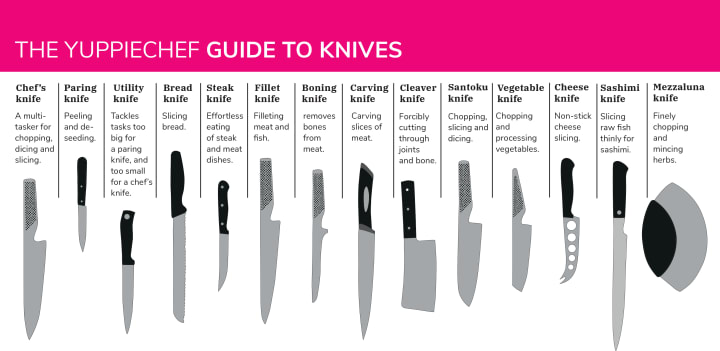
Credit: www.yuppiechef.com
Frequently Asked Questions
What Is The Difference Between A Chef Knife And A Carving Knife?
A chef knife is versatile for various kitchen tasks, while a carving knife is specialized for slicing meat thinly.
Which Knife Is Better For Cutting Meat?
A carving knife is better for cutting meat due to its long, thin blade that ensures precise slices.
Can You Use A Chef Knife To Carve Meat?
Yes, you can use a chef knife to carve meat, but a carving knife provides cleaner, thinner cuts.
What Tasks Is A Chef Knife Best Suited For?
A chef knife is best suited for chopping, dicing, and slicing vegetables, fruits, and various other foods.
Conclusion
Choosing the right knife makes a big difference in your kitchen. Chef knives offer versatility for various tasks. Carving knives excel in slicing meats with precision. Both knives have unique benefits. Consider your cooking style and needs. A well-equipped kitchen often includes both types.
Enjoy the art of cooking with the best tools. Happy cooking!
